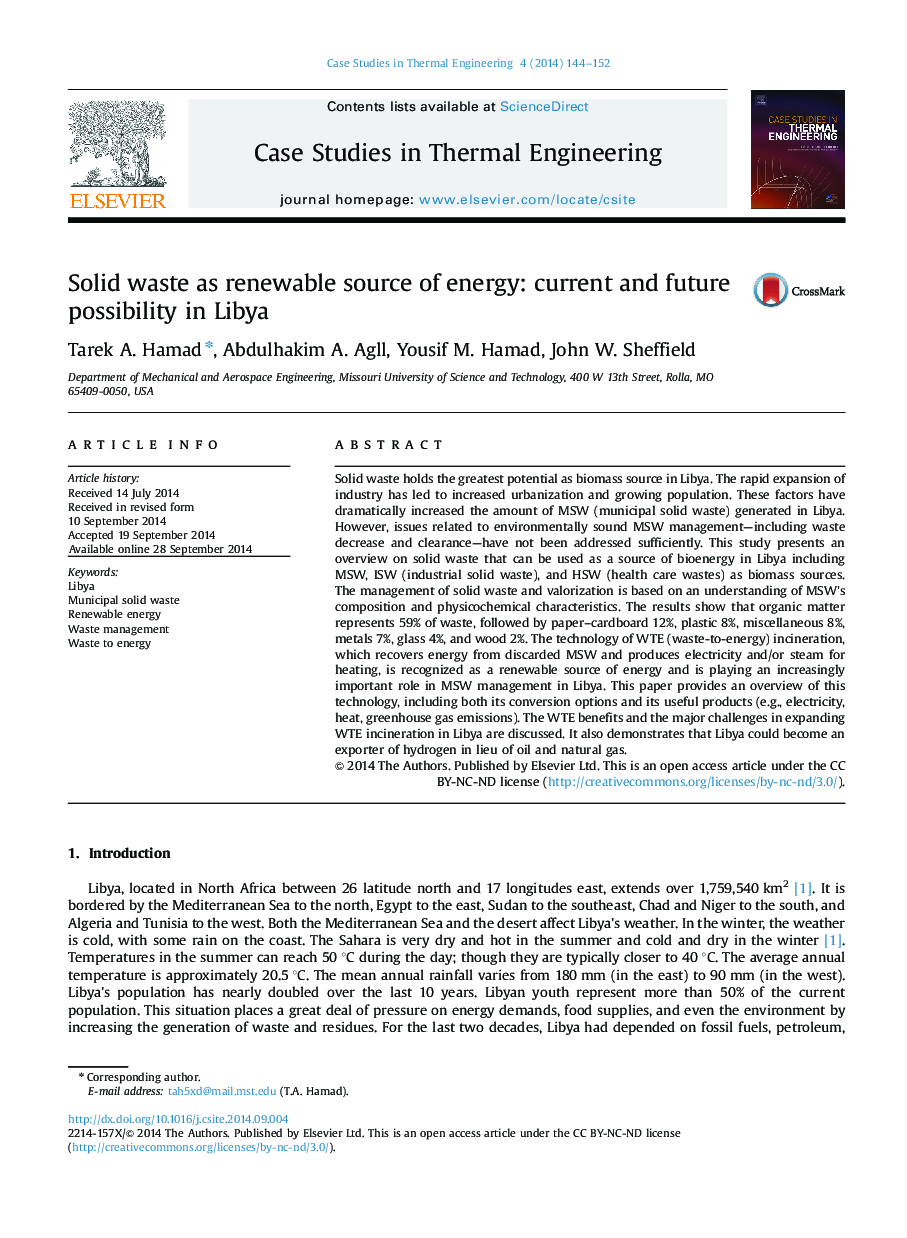| Article ID | Journal | Published Year | Pages | File Type |
|---|---|---|---|---|
| 765509 | Case Studies in Thermal Engineering | 2014 | 9 Pages |
Solid waste holds the greatest potential as biomass source in Libya. The rapid expansion of industry has led to increased urbanization and growing population. These factors have dramatically increased the amount of MSW (municipal solid waste) generated in Libya. However, issues related to environmentally sound MSW management—including waste decrease and clearance—have not been addressed sufficiently. This study presents an overview on solid waste that can be used as a source of bioenergy in Libya including MSW, ISW (industrial solid waste), and HSW (health care wastes) as biomass sources. The management of solid waste and valorization is based on an understanding of MSW׳s composition and physicochemical characteristics. The results show that organic matter represents 59% of waste, followed by paper–cardboard 12%, plastic 8%, miscellaneous 8%, metals 7%, glass 4%, and wood 2%. The technology of WTE (waste-to-energy) incineration, which recovers energy from discarded MSW and produces electricity and/or steam for heating, is recognized as a renewable source of energy and is playing an increasingly important role in MSW management in Libya. This paper provides an overview of this technology, including both its conversion options and its useful products (e.g., electricity, heat, greenhouse gas emissions). The WTE benefits and the major challenges in expanding WTE incineration in Libya are discussed. It also demonstrates that Libya could become an exporter of hydrogen in lieu of oil and natural gas.
